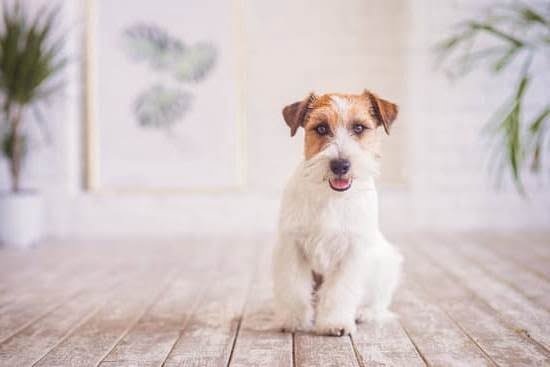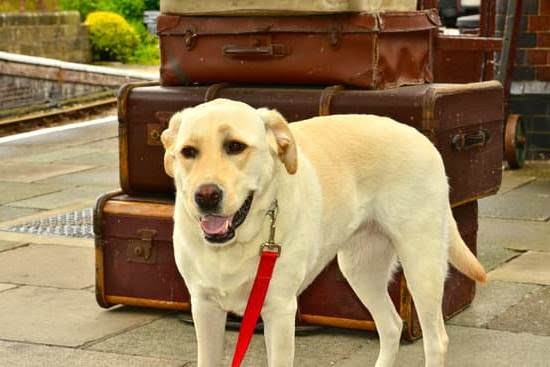Introduction
The advantages of having a trained dog are immense. From feeling more secure to providing companionship, owning and living with a trained dog can have many positive impacts on your life. With the proper training, a well-behaved dog can be a great addition to any household.
First, having a trained dog allows owners to feel secure in their own home and communities. A trained dog knows when to bark and when not to bark and will alert their owners if there is an intruder or potential threat nearby. This provides both the owner and their family with peace of mind knowing they are being protected.
Second, owning a trained dog can provide social contact outside the home. Dog owners often form relationships with other like-minded people in their community through joining clubs or classes focused on training their four-legged friends. Not only is this fun for them, but it allows them to make new friendships that wouldn’t otherwise be possible without Fido!
Third, living with a trained dog can bring much joy into your life and home. Training encourages communication with your pet which results in affectionate behavior from them as well as improved obedience when given instructions from you. This bond between dogs and humans is an incredible thing, leaving those who have been lucky enough to experience it wanting more time together!
Finally, taking care of a well-trained dog is much less stressful than caring for one without any prior knowledge or instruction about how to behave properly in society– meaning less messes around the house! Having clear expectations set by both parties eliminates any misunderstandings that could lead to destructive behaviors like chewing on furniture or excessive barking which generates noise complaints from neighbors.
All in all, having a trained dog has so many beneficial outcomes! Whether you’re looking for security, companionship, friendship or just an overall better quality of life – investing some time into teaching Fido proper manners will pay off tenfold in the long run!
What You Need to Know Before Training a Dog
Patience and commitment are two of the most important things to consider when training a dog. Set aside time each day to train your pup, and make sure that you stay focused and consistent in your approach. Start with basic commands like sit or stay, before progressing to more complex or specialized tasks like agility training. Use rewards and praise when your pup obeys your commands. It is important to be patient, providing positive reinforcement while continuing to challenge your pet with new and more difficult tasks. To ensure that the process goes smoothly, work with an experienced trainer who can provide guidance and advice along the way. Finally, don’t forget about crate training as a way to teach your pup how to be comfortable in confined spaces and how to obey commands even when distractions are present. Training your dog should be an enjoyable experience for both you and your pet – have fun!
Understanding Your Dog’s Temperament and Personality
Training a dog takes commitment, patience, consistency, and the willingness to observe your pup’s behavior and environment. Building an understanding of your pup’s temperament and the training style needed for them is essential for successful obedience work.
Puppies come with a range of personalities, so you must be prepared to adjust your expectations accordingly. For instance, if you have an excitable puppy that needs a lot of mental stimulation and activity, then you may need to prioritize physical exercise during their specific training sessions rather than trying to teach them complex tricks. On the other hand, if your pup is shy or skittish then it’s important that they are able to experience positive reinforcement techniques such as treats and affection in order to succeed.
It’s also important that both pup and parent get familiar with different kinds of commands that can be used when training the dog. Positive reinforcement techniques common with obedience training are typically more successful than force-based ones as this helps create mentally healthy dogs which form stronger bonds with their owners. It’s wise to invest in good quality educational material or even enrolling yourself into an obedience class where guidance on appropriate commands can be given by a professional trainer.
Lastly, having clear rules for the household will give both puppies and adults structure which is comforting for them – allowing them feel secure within the home atmosphere knowing what their limits are whilst giving structure when it comes teaching them new behaviors or getting used to particular commands. A consistent routine is incredibly beneficial too!
Establishing Effective Training Strategies
When it comes to training a dog, it is important to develop effective strategies that are consistent and humane. The first step in successful dog training begins with establishing clear communication between you and your pet. It can be helpful to find a positive reinforcement system that encourages desirable behaviors and discourages negative ones. This could include rewards such as treats or extra playtime for performing certain tasks, but it should also include appropriate consequences like withholding rewards for undesirable actions. Positive reinforcement techniques create an environment where the dog can learn more quickly.
Aside from basic commands, force-free techniques like clicker training methods are often used as they make training sessions more enjoyable for both parties. Clicker training uses markers such as a bell or clicking sound to signal when behavior is desired and timing must be precise in order to effectively communicate with the animal which reinforces desired behaviors. Clicker training requires patience, repetition, and consistency which are all essential components of any successful dog training program for creating a trained canine companion.
Creating a Motivating Learning Environment
Training a dog is all about creating a motivating learning environment for the animal. It begins with reinforcing good behaviors, such as following commands or sitting still when asked. Once basic obedience is mastered, you can move on to more fun activities like walking on a leash, agility training, and fetching. A key part of this training process is identifying rewards that will motivate your pup to succeed. Small treats such as healthy snacks are great rewards for achieving different tasks. Additionally, positive reinforcement such as verbal praise and petting can also encourage your pup to do its best. Finally, setting clear boundaries and teaching appropriate behaviors while providing consistent corrections is essential in any dog’s education. With enough patience and consistency, any pup can learn valuable life skills and become an obedient family member.
Working with an Experienced Dog Trainer
Working with an experienced dog trainer can be extremely beneficial in teaching your canine companion how to behave and follow commands. Professional trainers assess the animal’s needs and develop customized programs tailored to their needs, training them on various commands, obedience, agility, and good house etiquette. They also work with dogs on socialization training in order to help them become better family members by understanding their own interactions with humans. The trainer will use positive reinforcement techniques such as rewards for good behavior, verbal praise, and corrections when an unwelcome behavior is exhibited. Not only do professional dog trainers provide guidance for better interspecies communication, but they also throughly educate owners on how to properly and humanely interact with their own animals creating a stronger bond between owner and pet. This kind of relationship not only increases the quality of life for both human and pup but it can also reduce stress levels that often arise from lacking communication or lack of knowledge of Animal Behaviorists concepts such as behavioral relations. Working with an experienced dog trainer provides dogs (and people) life long skills that create optimistic learning habits resulting in higher morale amongst all walks of life
Implementing Positive Reinforcement Techniques
Positive reinforcement techniques are a great way to train a dog. These techniques focus on rewarding desirable behaviors through the use of treats, praise and affection. When using positive reinforcement techniques, it is important to choose rewards carefully. This means giving the same type of treat consistently and avoiding too many treats in one session which can lead to over-excitement or overindulgence as opposed to reinforcing desired behaviors. Additionally, you want to be sure that the timing of the reward is appropriate so that the dog is being rewarded for the desired behavior in a timely manner.
When training with positive reinforcement techniques, there are some important things you should consider. It is important to start slowly and give your dog plenty of opportunities for success as this will build their confidence and make them more likely to repeat good behaviors in the future. It is also important to be consistent with commands given during training sessions and pay close attention to your dog’s body language so that you don’t inadvertently reward undesired behaviors. Finally, setting boundaries with your pet can help reinforce positive behaviors while preventing unwanted ones from occurring in the first place.
Examples of Intermediate and Advanced Training Commands
Intermediate Commands:
“On your bed – ask the dog to settle on a designated spot such as their bed.
“Sit and stay – ask the dog to sit in one place and not move until given another command.
“Wait at Doors – tell the dog to pause at a doorway or other specified station until they are given permission to proceed.
Advanced Commands:
“Down from Distance – send the dog into a down position from across the room or yard.
“Go Around Objects/People – Ask the dog to move entirely around an object or person without touching them.
“Leave it – teach the dog to ignore an object that has been placed in front of them, no matter how enticing it may be.
“Retrieve – Teach the dog to pick up specific items and return them to you when prompted (such as bringing toys).
Incorporating Fun Into the Training Process
When training a dog, it’s important to ensure that you make the process as fun and rewarding as possible. If a dog feels bored or unenthusiastic while they are learning commands, they won’t retain the information as well. So, incorporating fun into your training sessions is essential!
One great way to do this is to provide snacks and treats when your pup completes a task correctly so that they associate positive feelings with the learning process. Rewards can be given in a variety of shapes and sizes, including treats, toys and extra attention. Select rewards which you dog loves so that they pay attention during the training exercises!
You should also introduce playtime regularly into your training session. Breaks for interactive games such as ‘fetch’ or tug-of-war, help maintain concentration levels by giving your pup an enjoyable opportunity to stretch their legs in between tasks. This will enable them to see each training session as “playtime”, which helps keep them engaged when tackling tricky tasks. Additionally, playing with your pup before and after each session will help build a strong bond of trust between the two of you – this makes succeeding on challenging commands much easier!
Nurturing Your Relationship With Your Dog During Training
Having a trained dog is not just about two-week courses and drills. It’s about creating a bond with your pup that fosters a healthy relationship, in addition to ensuring proper behavioral etiquette during all interactions with humans and animals alike. Training your pup can be an incredibly rewarding endeavor and one of the best ways to create an amazing connection with man’s best friend!
The first step to training any pup is building trust through positive reinforcement. Praising your dog for good behavior is key, as it encourages them to remain focused on the given task at hand. As you progress through training exercises, giving treats or verbal cues such as “good boy” are highly recommended; this helps further positive relationship building while simultaneously teaching the pup what behaviors will be tolerated (or frowned upon).
In addition to reward-based training, physical playtime should also be incorporated into every owner’s routine. Taking regular walks or exercising in the backyard are great options for bonding exercises between humans an their canine counterparts. And when playtime is over, make sure to always call it quits on a good note – rewarding your dog’s yearning for connection will only further solidify the bond that you share.
Finally, involving friends and family in your pup’s training can help keep them on their best behavior when around visitors or other animals. Just remember that proper socializing requires patience and understanding so clear expectations should always be established beforehand (notably no jumping or barking!). This provides both entertainment for guests and important learning opportunities for your furry pal without taxing their comfort levels too much.
With thoughtful effort during each stage of training, any pet parent can build a trusting relationship with their pup – one that ensures a harmonious balance between obedience and affection!
The Ultimate Rewards of Having a Trained Dog
Having a trained dog offers a huge range of benefits. For starters, having a trained dog is tremendously rewarding for pet parents. From a physical and mental health perspective, caring for a trained dog leads to improved wellbeing in their humans. The shared bond between pet and owner strengthens as training can help owners learn to recognize when their pet needs care or attention, allowing them to anticipate and meet their needs better than ever before.
Additionally, training also provides great health benefits for pooches. A properly trained pup is easier to handle on walks, provide lessons in obedience that can help decrease fearful behavior associated with aggression, and prevent them from chasing after small animals or creating other dangerous situations outside the home. Trained dogs also tend to be less destructive indoors due to an improved ability to understand ‘house rules’ like not chewing on furniture or eliminating where they shouldn’t – this type of behavior results in fewer messes around the house! Finally, having a trained dog gives you access to many fun activities like scent work and agility that helps owners take part in canine sports while strengthening the bond with their pup in the process.

Welcome to the blog! I am a professional dog trainer and have been working with dogs for many years. In this blog, I will be discussing various topics related to dog training, including tips, tricks, and advice. I hope you find this information helpful and informative. Thanks for reading!





